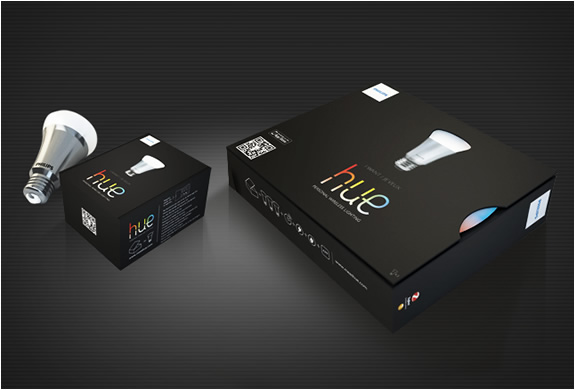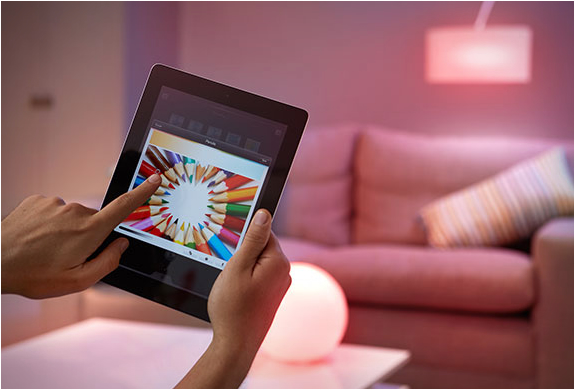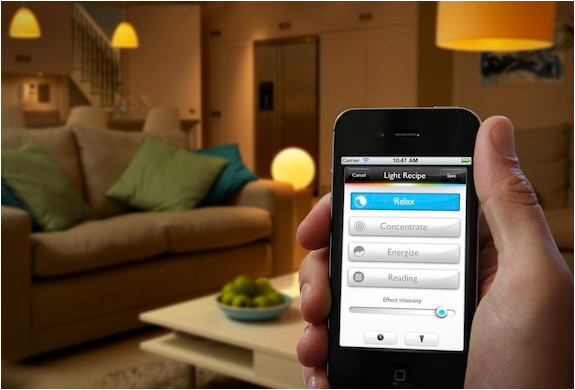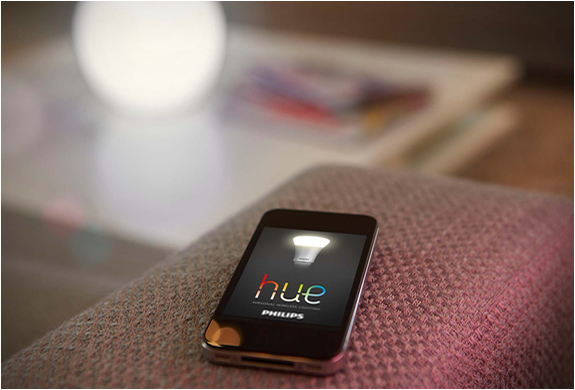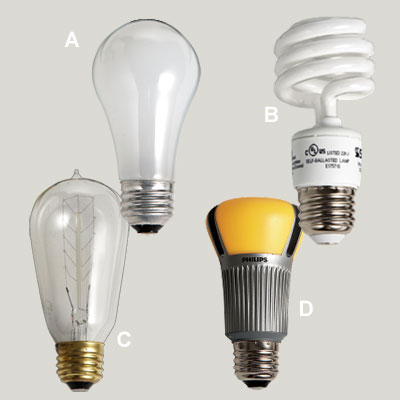 You might recall the revolutionary smartphone controlled light bulbs called LIFX we recently featured, now Philips have presented a similar product called HUE. The bulbs let you control your lighting from an iPhone or iPad and personalize settings such as timers, colors, shade and brightness. It also allows you to monitor your lights remotely when not at home for security. All this plus they use 80 percent less power than a traditional light bulb! The smart LED light bulbs are available from today exclusively in Apple Stores worldwide. Watch the amazing video
You might recall the revolutionary smartphone controlled light bulbs called LIFX we recently featured, now Philips have presented a similar product called HUE. The bulbs let you control your lighting from an iPhone or iPad and personalize settings such as timers, colors, shade and brightness. It also allows you to monitor your lights remotely when not at home for security. All this plus they use 80 percent less power than a traditional light bulb! The smart LED light bulbs are available from today exclusively in Apple Stores worldwide. Watch the amazing video
